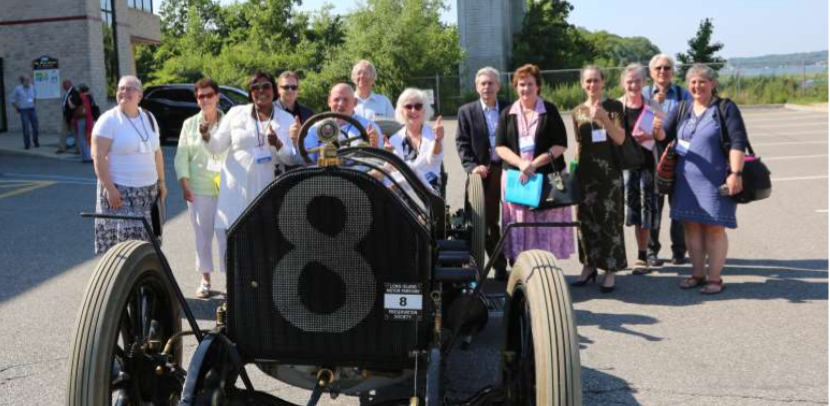From Great Neck to Montauk, Long Island has a rich history dating back to before the founding of the United States.
But what remains of that history — particularly structures — are frequently in danger of being cleared for new development.
“A lot of the historic buildings that aren’t landmarks are really being threatened when the property becomes more valuable than the building,” said Howard Kroplick, the historian for the Town of North Hempstead. “The property is more valuable if they knock it down instead of preserving it.”
Saving these historic structures was one of the goals of the Long Island Historian Summit, held on June 30 in Roslyn.
Kroplick was the main organizer of the event, backed by funding from the Robert David Lion Gardiner Foundation.
Sixty-three people were in attendance, including 31 historians.
According to New York state historian Devin Lander, last month’s meeting was the largest meeting of Long Island historians ever and likely was the largest gathering of local historians at a New York state regional meeting.
“The state of New York is unique in that it passed a law requiring every town and village must have an official historian,” Kroplick said.
But in reaching out the various towns and villages on Long Island, Kroplick said that many villages — particularly smaller ones — were not following this law.
A presentation given at the meeting showed that there are a potential 117 historians on Long Island, although only 72 have been confirmed. This was a result of 45 incorporated villages (38 percent) not assigning an historian.
Analysis from Kroplick’s wife, Roz, showed that most local historians worked part-time and 80 percent had college degrees. Of those villages and towns with historians, 27 percent never issued a report on that area’s history.
As Kroplick and other speakers at the meeting discussed, the lack of historians in some villages (every town on the island had an official historian) and the issuance of no reports in others stemmed from a lack of access to resources.
“Part of the reason we put this together was because I wanted to share resources, not just with villages in the Town [of North Hempstead] but all across Long Island,” Kroplick said.
In addition to speeches and presentations, Kroplick said, the summit was a chance for Long Island historians to network and establish connections, which he said could lead to assistance for preservation and funding down the road.
Among those in attendance was Peter Fox Cohalan, the former Suffolk County executive who served as a justice on the Supreme Court of New York from 1987 to 2012.
He is now Suffolk County’s historian and one of the Robert David Lion Gardiner Foundation’s five board members.
He introduced Thomas Ruller, the state archivist for New York, who spoke of the resources the archive and the Gardiner Foundation could offer local historians.
Following a panel discussion on further resources, there was a presentation on challenges facing new historians given by Southold Town historian Amy Folk and a presentation on preserving burying grounds given by Southampton Village historian Zach Studenroth.
To wrap up the day, Kroplick gave the attendees a tour of the Waterfront at Roslyn building (which hosted the event) and took several on a ride in his “Black Beast,” a 1908 car manufactured by the American Locomotive Co.
“We need a way to really work together and make a concerted effort to really identify [historic structures] and find a way to restore them,” Kroplick said.



